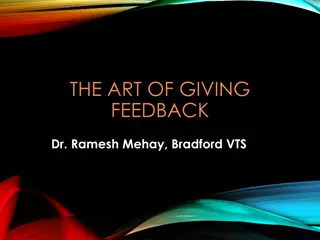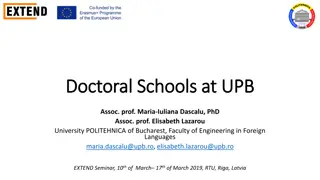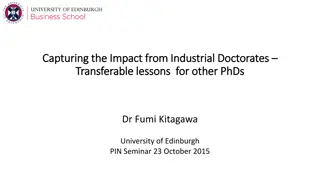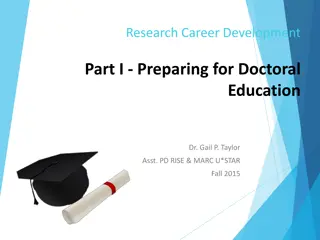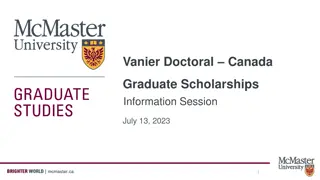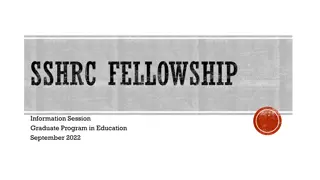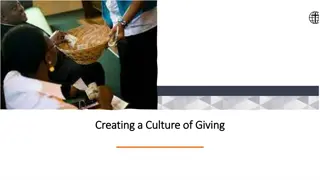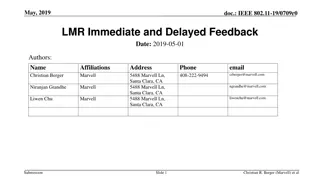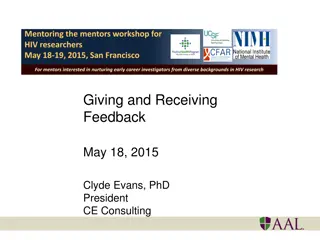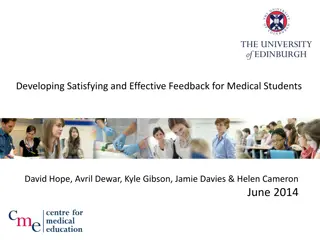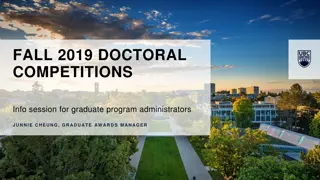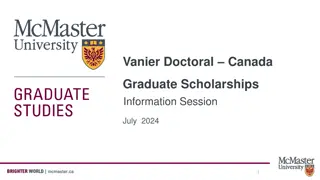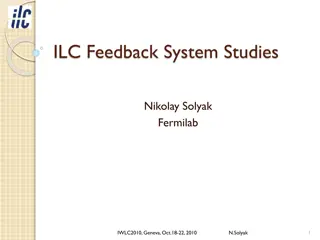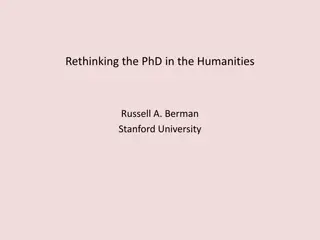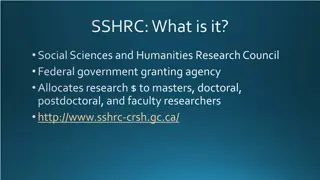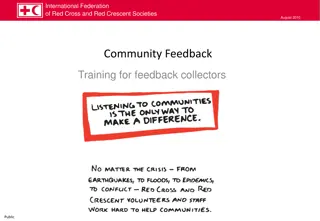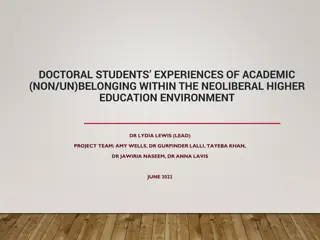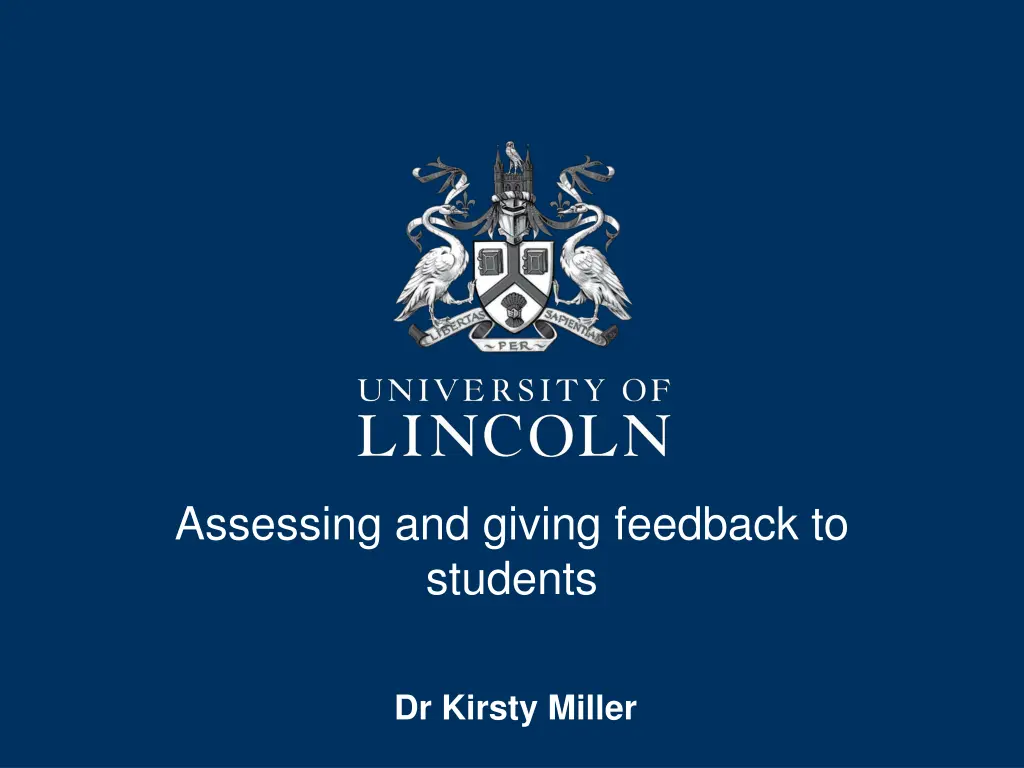
Effective Strategies for Student Assessment and Feedback
Enhance your understanding of student assessment and feedback with Dr. Kirsty Miller. Explore the importance, purposes, and principles of assessment, as well as different types such as formative and summative assessments. Discover how to engage students through constructive feedback and align assessment criteria with learning outcomes.
Download Presentation

Please find below an Image/Link to download the presentation.
The content on the website is provided AS IS for your information and personal use only. It may not be sold, licensed, or shared on other websites without obtaining consent from the author. If you encounter any issues during the download, it is possible that the publisher has removed the file from their server.
You are allowed to download the files provided on this website for personal or commercial use, subject to the condition that they are used lawfully. All files are the property of their respective owners.
The content on the website is provided AS IS for your information and personal use only. It may not be sold, licensed, or shared on other websites without obtaining consent from the author.
E N D
Presentation Transcript
Assessing and giving feedback to students Dr Kirsty Miller
Session learning outcomes On completion of this session you will be able to; Participate in the assessment of students and provide constructive feedback to help and support them learn Understand and apply the principles of giving effective feedback to students
The role of the postgraduate teacher in assessment As a postgraduate who teaches you are not likely to be asked to design summative assessments HOWEVER, you need to Understand assessment criteria and alignment to learning outcomes Be able to guide/advise students Be able to provide constructive feedback to students Utilise formative assessment methods to support students and develop your teaching
Group discussion What is assessment and why do we do it?
What is the purposes of Assessment? Or perhaps .. Provide feedback Grade student achievement We have always done it Motivate students and focus their sense of achievement No choice system Students expect it Estimate a student s potential to progress Importance placed on measurement Enable students to correct errors
Types of assessment Formative assessment Summative assessment Assessment for learning Carried out during teaching/learning Formative feedback may Improve learners learning Improve teachers teaching Formative assessment and feedback is inseparable from teaching Assessment of learning Carried out after the teaching/learning Used to see how well the student has learnt what they were supposed to The result/grade is final
Assessment criteria and alignment Assessment criteria must align with the learning outcomes Assessment tasks should be set to enable students to meet these. Criteria should be simple and clear to students Staff should mark to the assessment criteria It is good practice to link feedback to the assessment criteria
Criterion vs Norm-referencing Norm-referencing Individual achievement is judged in relation to the performance of the whole population Only a set percentage can achieve each level Criterion-referencing Achievement is measured against a clear set of criteria
How do we mark? Electronically using Turnitin Grademark Electronically annotating the original script Handwritten annotations on the original script Other .
Top tips for marking students work 1. Familiarise yourself with the criteria and assessment brief 2. Request calibration meetings 3. Mark to the criteria and marking scheme 4. Plan and manage your time 5. Beware of bias/prejudice/halo effect 6. Be confident to use the full range of marks just make sure you can justify each mark you give
Academic Offences Plagiarism Collusion Cheating Misleading material Misconduct in research
Task What was the most effective feedback you have received? What modality was it? What made it effective? How did you utilise it? And the least effective
Student perceptions of feedback The National Student Survey (NSS) scores The criteria used in marking have been clear in advance. Marking and assessment has been fair. Feedback on my work has been timely. I have received helpful comments on my work.
Types of feedback Feedback comes in may forms Written, verbal & audio Individual & group How and when might you use the different styles of feedback? What types of feedback will you be involved in?
Task What do these mean? Develop an academic tone Stronger argument needed Support your ideas Superficial analysis More critical reflection needed
Comments descriptions of the features of the student's work (what has been done and/or not done); evaluative judgements/comments linked to criteria and standards that indicate the features of the work that add to or detract from its quality (how well things have been done);
suggestions of alternative approaches that would lead to improvement explanations, or directions to resources, that demonstrate an improved possible approach that the student could use, and motivating comments (praise, encouragement etc.) that indicate that an aspect of the work is praiseworthy and explains why the element being praised is good.
What do students want? Praise for what they have done well Clarity about what was good so that they can do it again Clear identification of where they went wrong Specific pointers on how to put things right Identification of transferable skills (feedforward) particularly important for students who pass!
Encouraging students to engage with feedback Producing assessment feedback for students is difficult and time consuming Despite demands for it, students may not recognise, understand or use it We need to think of ways to engage students with their feedback
Summary Marking and giving feedback is challenging and time consuming You need to prepare for marking in the same way you prepare for teaching Try to self-moderate where you can Keep feedback simple, clear and constructive
References & further reading Baume, D. (1998) Marking and giving feedback. Milton Keynes: Open University Elton, L. (1987) Teaching in higher education: Appraisal and training. London: Kogan Page. Race, P., Brown, S. & Smith, B.(2005) 500 tips on assessment (2ndEd). London: Routledge.


